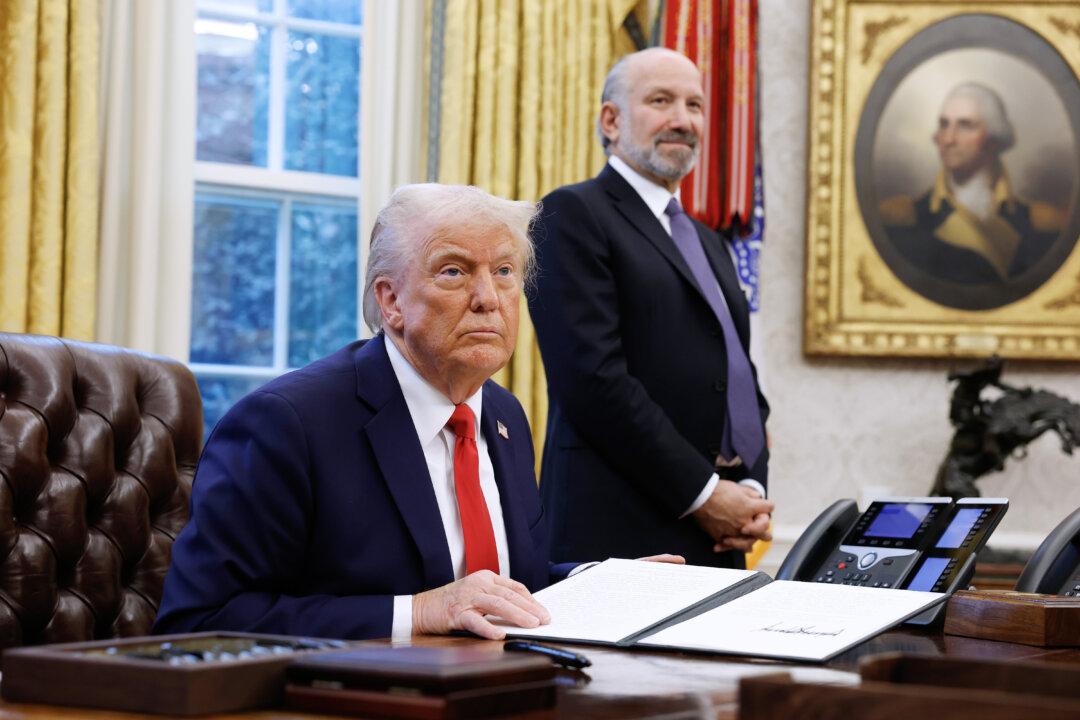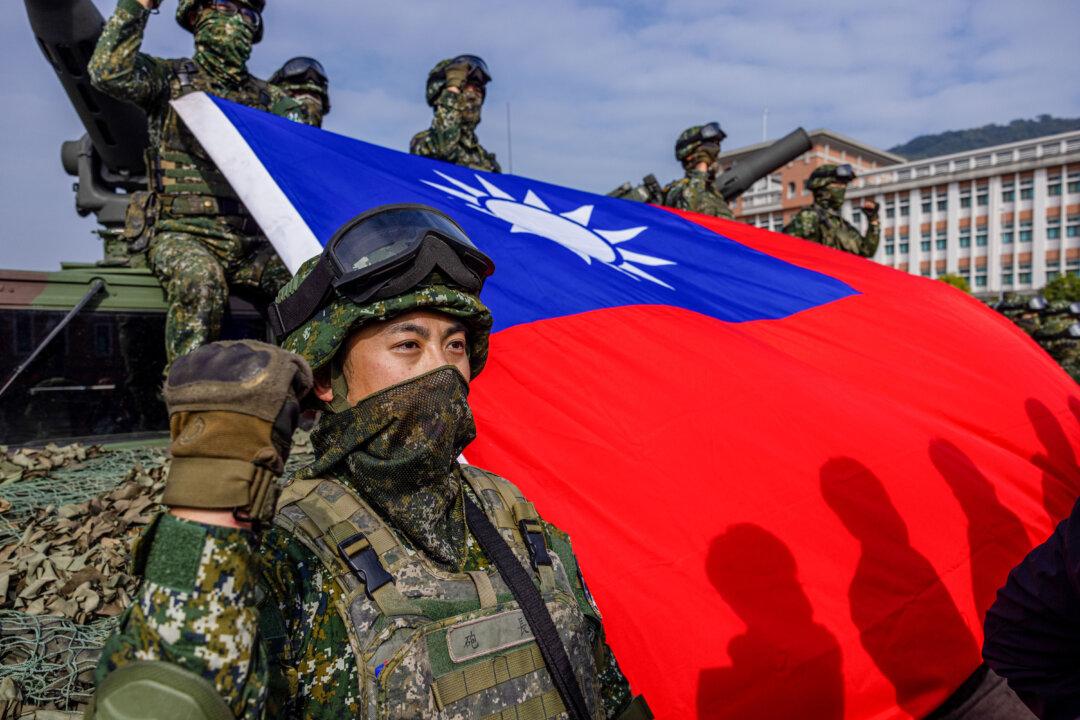A former U.S. Marine fighter pilot is awaiting extradition from Australia to the United States. He’s charged with helping the Chinese military learn naval flight operations from 2009–12. It’s against the law to export such defense know-how without a license.
If the charges are true, he really shouldn’t have done this, for example, helping the People’s Liberation Army (PLA) improve its ability to kill Americans if and when the time comes.
This is bad enough, but one might ask: Just him?
Yes, teaching Chinese pilots to master the difficult art of flying on and off an aircraft carrier is, at best, stupid and, at worst, traitorous.
But how about providing the funding, technology, and overall support for China’s economic build-up that allowed Beijing to build the PLA into a force that’s now the “pacing” threat? In other words, a match for U.S. forces and, in some respects, more than a match.
That’s what Wall Street, Silicon Valley, and too many CEOs have been doing for the past 30 years or more. One forgets how many people were hoping their ship would come in (to use the 19th-century term) in the form of a chunk of Chinese communist cash.
Those who sounded the alarm were “loons” or “cold warriors” and certainly knew nothing about the new globalized economy and “shareholder value.”
The White House and Congress got in on it, too—letting China into the World Trade Organization (WTO) in 2001 on the promise that it would one day meet the rules for joining the WTO. It still hasn’t.
This bolstered China’s economy and hurt our own. And Beijing didn’t have to choose between guns and butter.
U.S. financial regulators started listing Chinese firms on American stock exchanges in 2013. That’s important for getting the capital and foreign exchange to buy things such as iron ore to make steel for PLA Navy ships and buy foreign technology (with military uses), among other things.
The Chinese companies had a waiver on disclosure requirements since Beijing declared “the books” to be state secrets. How many U.S. or other nation’s companies got special treatment? None.
And Washington lobbyists played their role—lining up for lucrative gigs representing Beijing’s interests. And there’s never been a shortage of ex-Republican and Democrat politicians willing to help out, for a price.
How many former government officials were and are part of the revolving door between government sinecures, think tanks, and consulting firms in which they handle Chinese clients and help them navigate rules and regulations that might hamper their business? The rough figure: a lot of them.
And remember our China Hands within the U.S. government and our academic community? There was only one authorized view of China: a non-threatening nation just trying to find its place in the world. And to help things along, all engagement with China was good engagement.

The US Military Holding the Fort?
But certainly, U.S. military leaders had China and the PLA sized up and were taking necessary precautions—if only.In the 1990s, a respected, if not revered, retired Marine general was working with a U.S. company seeking to sell China rocket technology. He was successful.
One reasonably asks if teaching Chinese pilots to land on aircraft carriers is worse than providing China with MIRV (multiple independently targetable reentry vehicle) technologies. Take your pick.
On the U.S. East Coast in 2007, the chief of naval operations, Adm. Mike Mullen, invited the head of the Chinese navy, Vice Adm. Wu Shengli, to tour a U.S. aircraft carrier and a fast attack nuclear submarine.
One former U.S. intelligence officer noted this and other such visits: “The PLAN [People’s Liberation Army Navy] officers would ask 100 questions and get 100 answers from their American counterparts, but whenever an American officer asked a PLAN officer a question ... they got no answer.”
In 2008, the then-U.S. Marine Corps commandant visited the PLA Navy Marine Corps on a “getting to know you” visit and gave the Chinese marines a pep talk.
“It is not an area where we would want any tension to arise unnecessarily. ... And we would, if they choose to develop [an aircraft carrier program], help them to the degree that they seek and the degree that we’re capable, in developing their programs,” Keating said.
Even by the standards of what was going on in 2009, this was jaw-dropping.
In 2013, the chief of naval operations, Adm. Johnathan Greenert, hosted Wu in San Diego for another visit aboard a U.S. aircraft carrier and a Los Angeles-class attack submarine. Greenert noted that a better relationship with China would prevent future miscalculations.
The PLA was invited to the U.S. Navy’s premier RIMPAC exercise in 2014 and 2016 despite its aggressive behavior in the South China Sea—and targeting U.S. Navy ships. The Americans thought the engagement would transform Chinese behavior and help avoid miscalculations.

The U.S. Army was in on it, too. This writer recalls one senior Army commander in the Pacific brusquely dismissing Japanese Ground Self-Defense Force warnings about China in 2013. A senior Australian general in the room chimed in and said there was nothing to worry about from the PLA, and he was going to “extend the open hand of friendship.”
Then-Secretary of Defense Chuck Hagel pretty much characterized the “zeitgeist” among too much of the U.S. military’s leadership during this period. In 2013, after meeting Chinese Minister of Defense Gen. Chang Wanquan, Hagel commented: “Substantive military-to-military relationship is an important pillar for this strong bilateral relationship. The United States welcomes and supports the rise of a prosperous and responsible China that helps solve regional and global problems.”
There’s plenty more. I won’t mention the Sanya Dialogue, for example, but you get the idea.
Make no mistake, many officers and civilians had perfectly sized up the PLA threat. But few people, if any, wanted to hear it.
Remember the uproar when Capt. James Fanell warned in 2012 that China was developing its military with a future fight against the United States and its friends in mind? Fanell’s days were numbered.
Ironically, Adm. Robert Willard and key staff members at USINDOPACOM during 2009–12 were a notable exception to the saccharine view of communist China. Not surprisingly, Willard was unpopular in Washington and was allowed to retire instead of being asked to stick around and help prepare.
Now back to the former U.S. Marine in Australia.
The charges are serious. But if you remember how things were back then (it wasn’t that long ago), many people were doing things that helped out the PLA—directly or indirectly.
Indeed, building up China’s military was a team effort. It always is.
They should have known better.
And the young sailors, lance corporals, and privates will pay for their mistakes.





